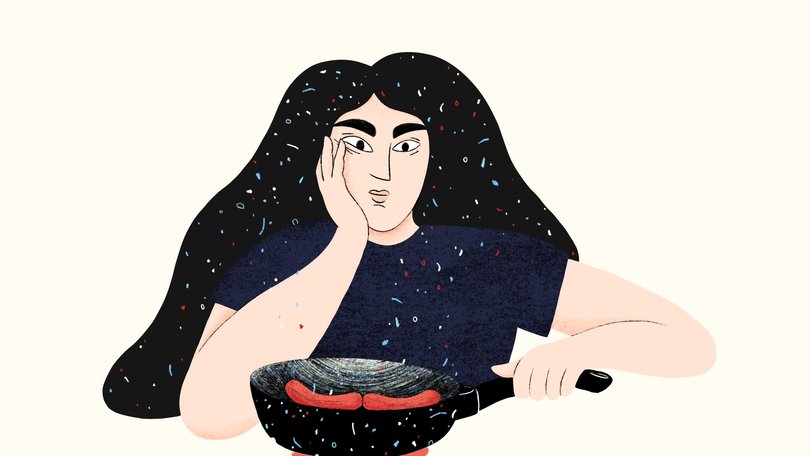WASHINGTON POST: How to cut back on microplastics, the tiny particles that can end up inside your body

Microplastics are really small pieces of plastic — less than five millimetres long on one side or about the size of a pencil eraser. That means some of them are visible to the naked eye, but others are so tiny that you can’t even see them — smaller than the width of your hair or even a red blood cell.
We’re exposed to these plastics in countless ways, whether it’s the worn car tires that release them into the air or the plastic-lined cans that get them into our food. Scientists have found microplastics in our livers, blood, brains and even placentas. And while more science is needed to fully understand how this impacts our health, there’s enough evidence for us to be concerned.
A systematic review I conducted with my colleagues in 2024 showed that microplastics are suspected to negatively impact reproductive health, primarily sperm quality, as well as digestive and respiratory health. The evidence suggests microplastics are potential causes of chronic inflammation, which could increase the risk of colon and lung cancer. Other studies have shown a link between microplastics and dementia as well as cardiovascular disease.
Sign up to The Nightly's newsletters.
Get the first look at the digital newspaper, curated daily stories and breaking headlines delivered to your inbox.
By continuing you agree to our Terms and Privacy Policy.But there are also effective ways to reduce our exposure through lifestyle changes. The key is to make these slowly over time, and be realistic about your budget and routines. There’s no need to throw out all your plastic food-storage containers overnight. Overall, it’s about reducing plastic use, particularly single-use plastics.
Avoid packaged and ultra-processed foods
I know this is hard, but probably the most important thing you can do to reduce your exposure to microplastics is to eat food that you prepare inside your house, made from scratch. Plastic-related chemicals are more commonly found in ultra-processed and fast foods, rather than foods cooked at home, and it’s not necessarily clear why.
I suspect it may have something to do with all the plastic packaging and the plastic used in the processing. So I try to avoid packaged foods whenever possible. When I travel, I pack my own lunch. Usually, I bring an apple and a peanut butter and jelly sandwich. I buy peanut butter that comes in a glass container, which I reuse for food storage and as drinking water glasses. I bring my own bags to the farmers market.
Of course, it’s not always possible to avoid plastics touching your food. I haven’t figured out a good way to store lettuce that isn’t in a plastic bag, so I’m looking for new ways to do that. I still buy rice that comes in a plastic bag. It’s possible to buy grains, beans and nuts in bulk - and bring your own containers to the store - but it can be logistically challenging. Especially if you have little kids.
Don’t microwave plastics or use plastic water bottles
I mostly use glass food-storage containers. Have I thrown all my plastic out? No, I have not. But I never use them in the microwave. Research has found that microwaving food in plastic containers can release millions of microplastics into that food. Single-use plastic water bottles can also leech plastics into your water, so I have a stainless steel water bottle that I carry around everywhere.
I also avoid nonstick pans and pots, since these can be made with PFAS (per- and polyfluoroalkyl substances) or “forever chemicals,” as they’re often known. Instead, I use a clay rice cooker, stainless steel pots and pans, and a cast-iron skillet that was my grandmother’s. It still works great, and I can fry an egg in it without a problem. I use wooden and stainless steel cooking utensils - and avoid black plastics.
A plant-based diet
I eat lower on the food chain, sticking to fruits and vegetables. There is still a lot to learn here, but we know that chemicals are more prevalent in larger animals. So I avoid red meat and ruminant animals such as goat and lamb. I also focus on eating whole grains and beans. And this is consistent with other dietary food guidelines. I do eat some fish. I recommend eating smaller fish in general, since larger fish, such as tuna and swordfish, have a longer lifespan and can accumulate pollutants like mercury.
We still don’t know the full extent of the microplastics in these animals. But we do know that eating lower down on the food chain is probably a good way to ensure your exposure is lower.
Minimise dust
Microplastics love to hang out in dust. One efficient way to decrease the amount in your home is to use a vacuum with a HEPA filter. HEPA stands for high-efficiency particulate air - meaning these vacuums are effective at removing very tiny particles around your house, including microplastics.
I also suggest using a wet mop or microfiber cloth to clean up around the house, which won’t stir up dust. My husband does this once a week at our house.
I use fragrance-free personal care and cleaning products
Some abrasive cleaning products, such as the kinds that have little particles to help you scrub, may have microplastics. The same goes for personal care products, such as exfoliants. I avoid these as well as any products with fragrances, since some companies place fragrances within tiny microplastic capsules so the scent will last longer.
The idea of avoiding microplastics can seem overwhelming - even to me, a person who has dedicated their life to studying environmental contaminants - but a few small steps can make a difference to reduce your exposure and improve your overall health. And it’s important to remember: It’s not your fault. The bottom line is that it’s hard for an individual to control the production of plastic, and we need systemic changes to lower our exposures.
Tracey Woodruff, PhD, MPH, is a professor at the University of California, whose research focuses on environmental contaminants and their effect on vulnerable populations.
Originally published as I’m a microplastics researcher. Here’s how I limit the plastic in my life.
